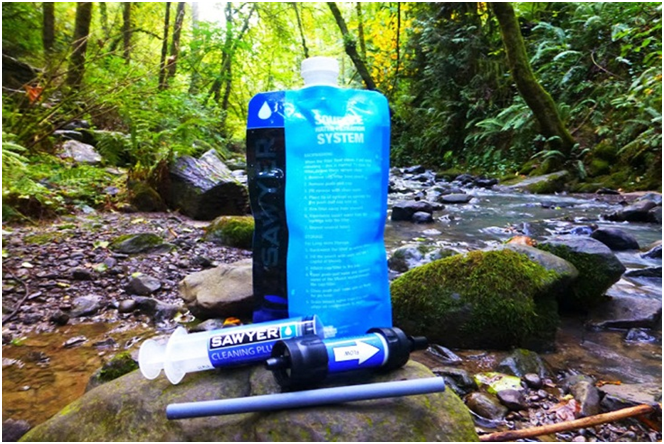When we are just sitting at the comfort of our home, grabbing for a glass of water whenever we feel thirsty is not a problem. However, the same statement cannot be said if we are walking on the wild. If we like to drink water, we can’t just fetch on a nearby creek. If we do, we will end up with ill health, since water from those sources have a very high chance of containing harmful microorganisms.
Don’t believe the scenes that you see in some movies, where someone would just drink the water from a river whenever they feel thirsty. Before the water from river and lakes become safe for drinking, it should be purified first. Also don’t forget to read backpacking water filter reviews online if you don’t have one.
What is the risk of drinking unpurified water when travelling in the wild?
If we are traveling in the wild, we need to make sure that we have access to the basic needs of survival. We have to secure those goods that are we need primarily, and water is one of them. Now, if you think your stay in the wild will last for several days, then you won’t able to bring enough water that can sustain the entire trip. You need to fetch from nearby bodies of water in the wild. However, it is not safe to drink those water directly, we need to remove harmful microorganisms from it first.
So what is the harm of drinking the water directly? What if the water looks clean and fresh, can I drink it? Well, you can’t judge the book by its cover. If the water looks clean, it doesn’t mean that it is already safe to drink.
Harmful organisms on water are microscopic in size, they can’t be seen by the naked eye. You have to purify the water so that you are free to drink afterwards. That way, you will have an unlimited supply of drinking water while you are traveling in the wild.
Okay, let’s discuss how harmful it is to drink unpurified water. First off, you can’t afford to get sick in the wild. Drinking untreated water from rivers can cause severe repercussions since it may contain parasite, protozoa, and bacteria.
If these microorganisms get into your system, you may end up acquiring diarrhea. Not only diarrhea, they can also cause loss of appetite, nausea, vomiting, and fatigue. There may be dead animals and wastes mixed into the water, increasing the contamination. Additionally, some diseases can also be present in the water supply, like cholera, dysentery, and botulism.
Overall, drinking contaminated water opens a lot of doors to various diseases. Don’t take the risk, always make sure that the water is safe before taking a sip.
Finding bodies of water
Now, you have your purifying devices with you, but you can’t find any bodies of water around. If this is the case, you really have to find any sources of water before you run out of water to drink. Rivers and streams are the best sources of water that you should try to find first. A running water is safer to drink since bacteria cannot live in it.
To find sources of water, you should stand firm and listen to the surroundings. If the area is quite, you should hear a running water even if it is far away. But, as an alternative, you can also observe the behavior of animals. Swarms of insect can be a sign that water is nearby. Also, try to travel to low ground since water runs downhill. With these alternatives applied, you should be able to find a source of drinking water. You can also collect rainwater if it is raining.
How to Purify Drinking Water
After spotting a body of water. You can start purifying it so that it will become safe for drinking. Here are some of the ways of purifying the water.
- Boiling
If you come unprepared and haven’t brought any filtration system, you can just go with boiling. It can effectively remove bacteria and viruses from the water. Just put it on the fire for an extended period. Maybe for around 2 minutes or 1 minute after boiling. You can do it on a metal can or cup.
- Filtering
With filtration, you can separate microorganism from the water, but not kill them. It is an additional cargo though, however, it is effective. The filter can remove bacteria and viruses from the water. You can clean it too, after repeated usage.
- UV lights
This another effective way of treating the water. It can also kill bacteria and viruses, along with other harmful microorganisms on the water. A major disadvantage of devices that does this function is that they are battery-powered. This means that if they run out of power, you won’t able to use it anymore.
- Chemicals
This is probably that fastest way of treating the water. Just add a couple of drops to the water and then shake it. You can use tincture of iodine 2% to a bottle containing the water. It is very cost-effective and gets the job done quickly. Add two drops and then shake the bottle. You can drink the water afterward.

